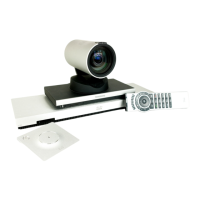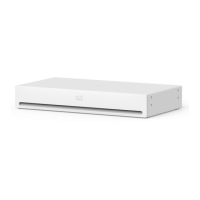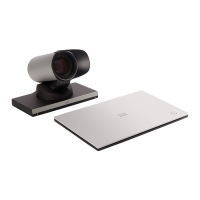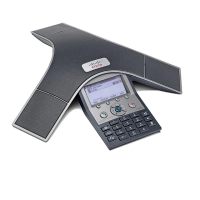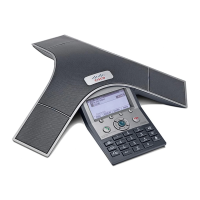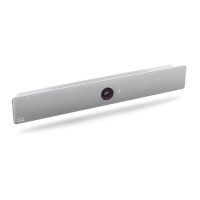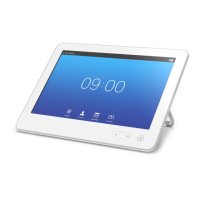20
D14582.15R1 (Rev.1 Nov 2013) User guide Prole Series, Codec C Series, Quick Set C20, SX20 Quick Set,
MX200, MX300. All contents are copyright © 2010–2013 Cisco Systems, Inc. Version TC6.2, 06.2013. English
Cisco TelePresence System Prole Series, Codec C Series, Quick Set C20, SX20 Quick Set, MX200, MX300 User guide
www.cisco.com
Accept the incoming
call and merge it with
the ongoing call*.
For MultiWay you
must put the current
call (or group of
calls) on hold before
merging can take
place.
This is due to the fact
that the incoming call
must be transferred
to the MCU and then
merged.
Decline the incoming call
and carry on as you have
been doing.
Ignore the incoming call (you
will appear as absent to the
one who is calling you).
Accept the incoming
call, while holding the
current call or group of
calls.
Accept the incoming
call, while ending the
current call or group of
calls.
Receiving another incoming
call, while already in a call (II)
Assume that you are already in a call. If you then
receive another incoming call, you will have the
following options:
• You may decline the call and continue with what
you were doing.
• You may put the current call on hold and accept
the new call. At any time you may swap between
the two. Systems with no MultiSite or MultiWay
installed cannot create a conference and they are
therefore conned to this way of talking to both
(that is, one at a time). They do, however, support
one extra audio-only call.
• You may transfer the incoming call to someone
else, including the one you were talking to—see the
following page for more on this.
• You may, after putting the incoming call on hold,
merge this call with the existing (optional feature
requiring the presence of conferencing options).
• You may merge the incoming call directly with the
ongoing call (ACCEPT & MERGE), but this can
only take place if your video system is equipped
with the MultiSite option.
Note that in the case of Multiway, a small time delay
may be experienced when accepting that an incoming
call joins the ongoing call. This is due to the transfer of
the call to the external MCU.
The one(s) you already
are in a call with.
The identity of the new
incoming call.
* If your system is equipped with MultiSite you may merge the incoming with the current call.
For systems without MultiSite installed, the incoming call may still be merged, but as an audio-only call.

